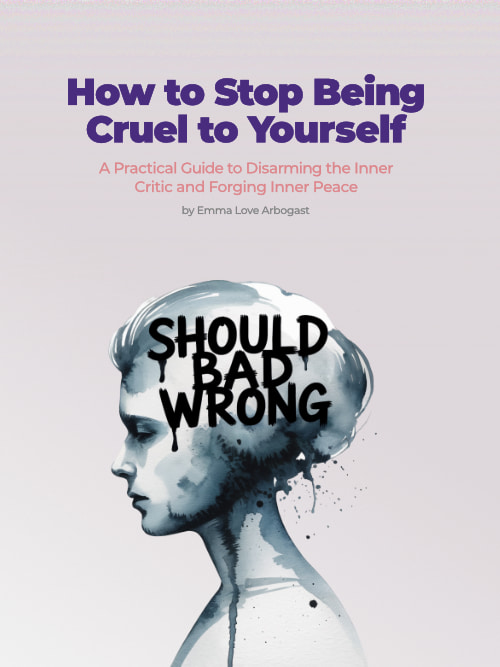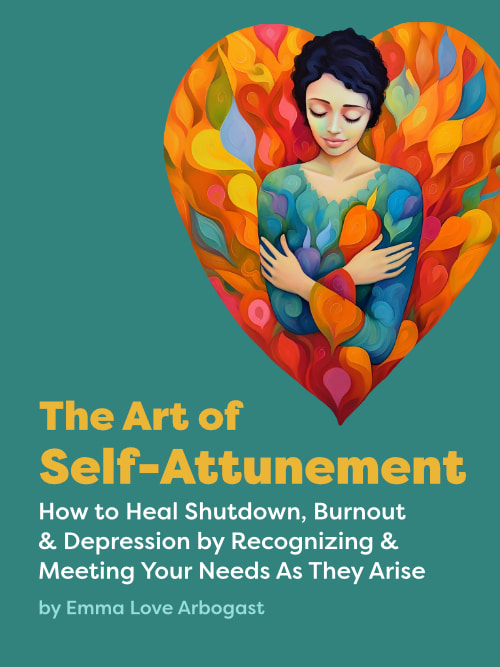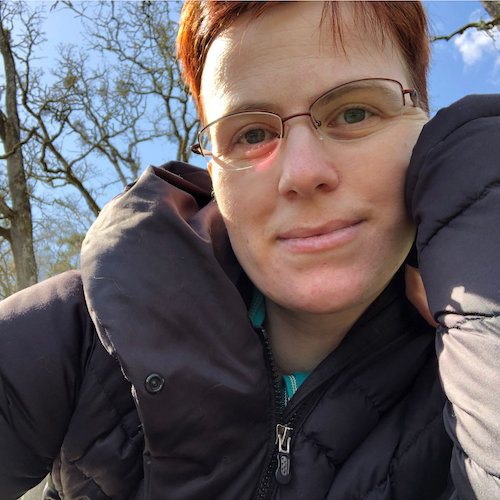Limbic Templates: How to Change Deep Patterns
Our limbic system is our body’s emotional-relational system. The limbic brain is responsible for relating, a sense of self, motivation, focus, and emotions. It is sometimes called the “mammal brain” because it first evolved in mammals.
It is involved:
- when you feel awkward
- when you don’t like someone and you don’t know why
- when you fall in love
- when you feel “open-hearted” or “hard-hearted”
- when you sense someone has a creepy vibe
- when you get a bad feeling “in the pit of your stomach”
The limbic system is made up of nerve centers in your gut, in your heart, and deep in your brain.
Our brain receives an immense amount of sensory data that we couldn’t possibly deal with consciously—but our brain is still tracking it.
There’s a lot going on in the parts of your brain you’re not aware of.
The limbic brain processes 2 million bits of information a second. It processes all the sensory information in our environment and within our bodies to look for what is important.
That’s a whole lot of pattern matching.
Some of what it is looking for:
- physical danger – a threat to our survival
- relational danger – a threat to our sense of connection and belonging and OKness with others
- anything that looks like anything that was dangerous in the past
- people saying our name or trying to get our attention
- anything relevant to our current focus of attention
This part of our brain operates strongly on wired-in networks. It’s not creative, inventive, or spontaneous. It does what it’s done before, according to limbic templates.
The structures of the limbic brain evolved 65 million years ago. Our cerebral cortex has been around for about 2 million. That means they don’t always cooperate well, and the limbic brain is a lot more tightly wired to our nervous system than our conscious thought or executive function.
When we sense danger, our limbic brain takes over before we can think about it. We sometimes call this, “getting triggered”. But our limbic templates operate at more subtle levels than just our overt triggers. They influence us all the time, in all situations, without our realizing it.
Limbic templates are your basic sense of:
- whether the world is a safe place or not
- whether the world is an abundant place that meets your needs or not
- whether you belong or not
- where you belong, and with whom
- how you can expect to be treated and received by others
- what love feels like
- your strength or weakness relative to others
The deepest templates get created as infants.
Our most pervasive, deep, core templates that inform our world without us realizing it were wired in before age 2. This means you have no conscious knowledge of any of the events that form your core habit patterns—especially the ones that influence your relationships. (What could go wrong?)
After you are born (and even before to some extent), your neural circuits quickly begin wiring together as you learn how the world works.
Let’s say you’re a baby, and you get hungry. You cry → your mom responds → you eat → you feel full → you feel good. The neural circuits for “an uncomfortable sensation in tummy”, “crying”, “mamma comes to me”, “feeding happens”, “full belly”, “feel good” all light up. And neurons that fire together, wire together.
As an infant, you have not yet differentiated from other people or the world—your experience is not divided up like that. That means when you take in an event, you learn it as The Way Things Are.
In our example, if this pattern of crying, getting fed, and feeling good is consistently repeated, you will begin drawing positive conclusions about the world, like:
- it’s OK to express my needs
- when I express my needs I get them met
- there is plenty of nourishment available
- and the all important one: it’s good to be me
But even in the best of circumstances, things can go wrong.
Let’s say your mom loved you very much, but worked full time and had to feed you on a schedule rather than every time you were interested in food. In this scenario, you get hungry → cry → cry more → get exhausted → fall asleep. Then, later, your mom comes and you get fed.
If this pattern gets repeated over and over, the neural results of this might be beliefs like:
- there is no point to expressing my needs because nothing happens
- when I need something I am alone
- there is not enough for me
- I don’t get what I need when I need it
- I’m not important
- it’s painful to be me
- hunger and eating are not connected
These are what we often call “core beliefs”. They don’t all get formed before age 2 – but nearly all do before age 7. They form based on repeated experiences and on overwhelming experiences—and a great deal can be overwhelming to an infant or toddler.
The worst of course is repeated overwhelming experiences, which creates CPTSD. This is why healing CPTSD requires work on your worldview and belief systems.
If you formed negative core beliefs as a baby, it’s not hopeless. Our brains are surprisingly amenable to changing these templates (under the right conditions), which we call neuroplasticity.
At any age, we can change our wiring.
All you have to do to change these limbic templates is learn and practice new ones. Sound simple, right?
But this learning isn’t the cognitive kind—you can’t just read a book. You have to learn relationally by essentially absorbing templates from other people who have more secure and stable limbic templates.
Often this happens unconsciously:
- You meet someone who is a role model for you. As you watch them and interact with them, you are studying who they are. On a physiological level you are “downloading” their limbic templates and making them your own.
- You are anxious and insecure in relationships, but you meet someone who is happy and secure. They are patient with you, and you are willing to learn how to trust, and you relax and begin to feel secure too.
- You aren’t very confident, but you join a work team where everyone is supportive, friendly, and tightly connected. As you become one of the group, you bask in the positive feedback and camaraderie Over time, you absorb the positivity until it’s a part of you.
- You’re terrified to give a speech, so you join Toastmasters. Practicing speaking in a safe environment, your body starts to relax as it learns that nothing bad is happening and the people there are safe.
You can consciously seek out these experiences, and accelerate the process using mindfulness.
- Look for role models.
- Hang out with the healthiest friends, co-workers, and couples you know and notice how they relate to others.
- Form a group of supportive friends and meet regularly.
- Work with a coach or a therapist who can help you identify your limbic patterns and practice new ways of relating. (I recommend Hakomi therapy and Presence-Based Coaching).
It’s important to note that you have to be willing to absorb these new limbic templates.
A person could easily join a great work team and bring their pessimism or helplessness with them and not change at all. You have to be willing to be influenced by your new experiences and give up your old ideas of how the world is. You also have to genuinely feel safe, not just think you “should” feel safe.
You can design new limbic experiences and practice them.
Let’s say you have a hard time saying no, or anticipating hearing no. You have some kind of limbic template that says that “no” = danger.
This causes you to do all kinds of relational gymnastics to try to figure out what someone is willing to do without directly asking them, or to hint that you want to say no without actually saying no.
You can design an exercise to work with this. Find someone who is willing, and practice saying no to each other. Ask for something, and the only rule is the other person has to say no.
- Can I borrow your pen? No.
- Will you give me a hug? No.
And then breathe and take in the experience that you are still safe. Let yourself feel what this new idea of the world is—that “no” can be safe.
This mindfulness and intentionality part is crucial. Really notice what is going on in your body as you do it. This updates your neural circuitry. Practicing with mindfulness will integrate the experience, so you saying no becomes easy and natural in the future.
It’s phenomenal how much you can change when you start doing this work.
Mindfulness = magic.
Mindfulness is the key to deliberately changing ingrained neural pathways.
Remember the super-pattern-matching limbic brain? You need to give it a new pattern to match up against. Instead of, “I recorded an experience that saying no is scary, don’t do it”, it can now match against, “I recorded an experience that saying no is safe and fine, go ahead”. In a split second, instead of getting anxious and veering into codependency, you’re saying what’s true for you in the moment. It’s amazing.
Mindfulness does this by hooking your old pattern up to new experiences, and ‘updating’ it. It literally “saves” your current reality over your previous template, changing the old pattern permanently by changing which neurons are predisposed to fire together.
Mindfulness is a special neural network that is encapsulated, so it can “observe” other neural networks and cause them to interact with each other rather than remaining isolated.
Practicing new behaviors without mindfulness does not have the same transformative effect. Practicing without mindfulness can set up a new neural pathway, but using mindfulness to experience both the old limbic reaction and the new experience at the same time lights up the whole neural map and actually wires them together, which changes the old pattern permanently.
Self-love is a set of skills you can learn

Stop Being Cruel to Yourself
$2.99


Hey there! If you're new here, welcome to the Emmaverse! 🌈✨
About me: I'm autistic/ADHD and I write about how to be free and happy from the inside out.
Keep in touch?
Self-Liberation Society

Oh wow, you’re making some really good points here. I just wanted to say that this is basically the way I did it to get up of from the lowest point in my life. I literally chose, consciously, who I was gonna let “manipulate” me out of the state I was in, and I went out to get those experiences I knew I needed to counteract for what had happened. And it works, it really, really works.
Fantastic stuff. Thank you!